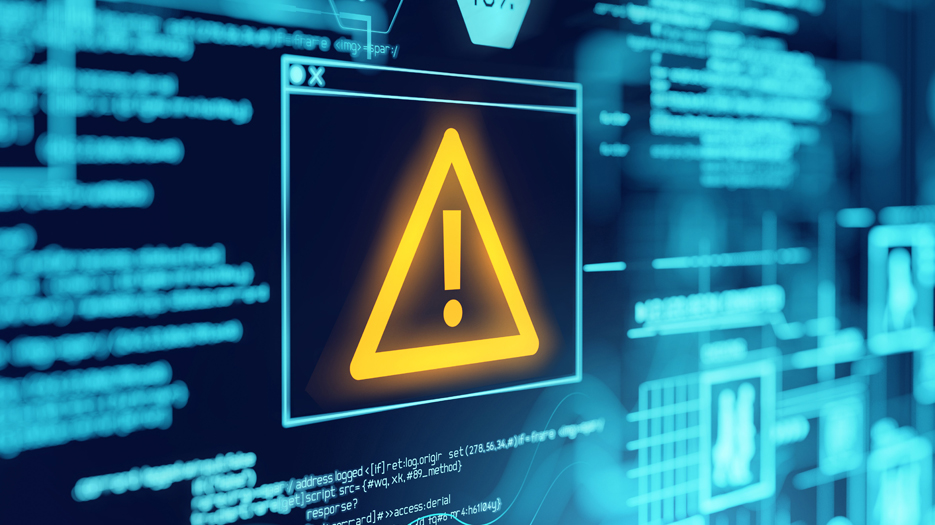Cybersecurity in the Workplace, Information Security and Network Security: A Comprehensive Guide

Failure to construct a sturdy security architecture could be extremely costly for your business. In IBM's 'Cost of a Data Breach Report 2023', it is reported that US$4.45 million is the average yearly data breach cost. Don’t let your business fall into this trap at the hands of cybercriminals.
This article introduces the concepts information security, network security, and cybersecurity, and why they are essential for businesses, both big and small.
What is Cyber Security?
Cyber Security is a multifaceted concept that refers to the protection of computer systems and networks from unauthorized access, theft, damage or destruction of data, and other cyber-attacks. It involves the deployment of various technologies, processes, and policies to safeguard sensitive information and infrastructure from malicious acts by hackers, cybercriminals, and other threat actors. The scope of Cyber Security is broad and encompasses a range of domains, including network security, information security, application security, and operational security. The goal of Cyber Security is to ensure the confidentiality, integrity, and availability of digital assets and to mitigate the risks associated with cyber threats that pose a significant threat to organizations and individuals alike.
The Core Principle of Cybersecurity
Cyber security refers to the protection of systems that are connected to the internet from threats in cyberspace. It involves software, data and hardware protection that seeks to deter cybercriminals from accessing devices or networks.
When working in the office, cybersecurity rarely crosses the minds of employees. This is because the IT and security teams have laid a secure groundwork and they have their guards up at all times. In the absence of a protected office environment, remote workers can easily run into threats like malicious software, information leakage, as well as risks that come from using personal devices to work.
Having a remote and hybrid workforce is cause for companies to strengthen its cyber security policy. Work with IT professionals or start looking into the cybersecurity tools that will help keep the walls up between your critical information and uninvited parties.
Cybersecurity Tools
There are a plethora of cybersecurity tools out there that can assist your digital workplace security systems. We’ll do a rundown of some of the best cybersecurity tools you can consider for your business:
- Metasploit
Metasploit was briefly mentioned earlier and it’s worth circling back. The tool is useful to invest in for robust cyber security infrastructure. Metasploit identifies all new security vulnerabilities as they happen, and will be an advantage for round-the-clock security protection.
- Kali Linux
Kali Linux is another widely used cybersecurity system and it’s an excellent penetration testing tool. The operating system includes 300 tools for cyber auditing. It uses various tools for organisations to scan their systems effectively for vulnerabilities.
Why is Cyber Security important in the Workplace?
The need for a robust security infrastructure has grown along with the increase of cyber attacks in recent years. We all remember the recent data Facebook Messenger breach, which exposed the data of 533 million users in 2021.
However, cyber attacks do not only happen to large corporations. Smaller businesses are also at risk as cybercriminals will assume they have weaker security protocols and will be more susceptible to a breach.
Focus on three elements to enhance your business security – people, process, and technology. Train your team in cybersecurity trends and engage professional IT support with solid cybersecurity strategies; implement security through the processes your business uses such as strong passwords and access controls which involves technical solutions.
Alternatively, small business owners can also resort to a safe workspace to mitigate cybersecurity threats. Today’s flexible office space providers are a great alternative to offices where you have to set things up yourself. They come ready with enterprise-grade IT infrastructure, and are able to tailor customised IT solutions and advanced security setups to suit different business requirements.
Evaluate the IT Setup at your workplace. Read more about guarding against cybersecurity risks.
Next, let’s take a deep dive into the three seemingly relevant security concepts that has its own distinctions.
What are the Common Types of Cyber Attacks?
Cyber attacks are becoming more prevalent in today's digital age. There are three common types of cyber attacks: phishing attacks, malware attacks and denial-of-service attacks. However, there are other forms of cyberattacks that are equally dangerous and can pose a threat to individuals and organizations alike.
Phishing Attacks
Phishing attacks are a type of cyber attack that uses social engineering tactics to trick users into divulging sensitive information such as login credentials, credit card details, or bank account information. Phishing attacks can be executed through various means such as email, phone calls, text messages, or social media messages. Attackers often create fake websites or emails that appear to be from a legitimate source, such as a bank or a popular online retailer. The goal is to deceive the user into clicking a link and entering their personal information on a fake website. For example, an attacker might send an email that appears to be from a bank, asking the user to click a link and enter their login credentials to update their account information. Once the user enters their information, the attacker can use it for fraudulent activities.
Malware Attacks
Malware attacks are a type of cyber attack that involves the deployment of malicious software into a computer system or network. This software is designed to damage, disrupt, or steal sensitive information from the targeted system. Malware can take many forms, including viruses, worms, and Trojan horses. Once a system is infected with malware, the attacker can have full control over it, potentially compromising the security of the entire organization. An example of a malware attack is the WannaCry ransomware attack that occurred in 2017, which affected more than 300,000 computers in over 150 countries. The attack encrypted the data on the infected computers and demanded a ransom payment to restore access to the files.
Denial of service (DoS) Attacks
A Denial of Service (DoS) attack is a malicious attempt to prevent legitimate users from accessing a web service or network resource. The goal of a DoS attack is not to steal data or gain access to a system, but rather to make a web service or network resource unavailable to its intended users. This is accomplished by flooding the target with a large volume of traffic or by sending it information that triggers a crash or other system failure.
DoS attacks can be launched in many different ways, including flooding the target with traffic, exploiting vulnerabilities in the target's software, or using botnets to overwhelm the target with traffic from many different sources. One example of a DoS attack is the Ping of Death, which involves sending oversized ping packets to a target, causing it to crash or become unresponsive. Another example is the SYN flood attack, which involves sending a large number of TCP connection requests to a target, exhausting its resources and making it unavailable to legitimate users.
How can I protect my workplace from cyber threats?
As the world becomes more digitally reliant, businesses must be vigilant in protecting themselves from cyber threats.
• Educating and training employees on cybersecurity best practices is crucial, as human error is the most common cause of data breaches.
• Robust password policies should be enforced to ensure that employees use complex, unique passwords that are regularly changed.
• Keeping software updated and patched is also vital, as outdated software can leave vulnerabilities open for exploitation.
• Implementing multi-factor authentication (MFA) adds another layer of security, making it harder for hackers to gain access to sensitive information.
• Finally, maintaining regular data backups is essential, as it can help mitigate the damage caused by a cyber attack.
By following these practices, businesses can better protect themselves and their data from cyber threats.
What is Information Security?
Information Security refers to the practice of safeguarding sensitive and confidential information from unauthorized access, use, disclosure, disruption, modification, or destruction. It involves the implementation of various measures, including technical, administrative, and physical controls, to ensure the confidentiality, integrity, and availability of data. The goal of Information Security is to protect information from threats and vulnerabilities that could cause harm to individuals or organizations. This concept encompasses a range of domains, including data privacy, data protection, access control, risk management, and compliance. With the increasing reliance on technology and digital information, Information Security has become a critical aspect of modern-day business operations and personal privacy.
The CIA "Triad" of Information Security
In InfoSec, there are 3 tenets that make up the security model, they are known as the CIA Triad, which stands for Confidentiality, Integrity, and Availability. These are the focus areas businesses look into when they consider mitigating potential risks in various parts of IT security.
Confidentiality measures are taken to prevent critical information from being accessed by unauthorised parties. It can involve segmentation of information based on who can and should access and by sensitivity of information.
Integrity involves ensuring that data is not compromised; in other words, it focuses on securing data from alteration or damage from unauthorised parties.
Availability is the component that refers to the consistent accessibility of information to authorised parties. This involves security architecture and technical maintenance that is designed to that purpose.
Important Components to Build Information Security
Here are 2 things you can start with when you are building a more secure workplace:
Governance Structure
The first thing you should start with your information security is a governance structure or framework. Having a governance structure in place ensures that your security policies align with your business objectives. You should think of your governance structure as the foundation of your information security programme. This structure defines the roles, responsibilities and accountabilities of each person and ensures that you are meeting compliance.
Information Security Management Systems
An information security management system or ISMS is a set of guidelines and set processes to help organisations safeguard important information. By having a formal set of guidelines, businesses can minimise risk and can ensure work continues as usual in case of a security incident or a change in business.
ISO 27001 is a well-known specification for a business ISMS. The ISO 27000 is a set of standards that have been developed to help keep information assets secure. You can invest in reliable software like IT Governance or Data Guard to protect the information security of your business.
The Underlying Principles of Network Security
Network security is a set of rules and processes developed to protect the computer networks
and data using both software and hardware technologies.
When businesses choose to go remote for its employees, it gets a more challenging for IT professionals to mitigate user errors outside of the protected office environment. Remote workers can compromise network security from something as common as connecting to a public Wi-Fi at a café.
While it may not be in the job description of a non-IT or security personnel, everyone should have a working knowledge of security and its layers. On top of working with the IT team for your remote setup, here are a few aspects that would be good to understand:
1. Physical Security
First, there is Physical Network Security. This secures the physical aspects of your network and stops attackers or unauthorised users from being able to access your network through things like routers, cables or other physical tools.
2. Technical Network Security
Second, there is Technical Network Security. This secures the data stored on the network. It
protects both data and systems from unauthorised personnel, and it also protects against malicious activities from in-house employees. For example, firewalls can help filter unwanted traffic from entering your network.
3. Administrative Network Security
Third, there is network access control and change management tool. This includes how users are authenticated into the network, the level of access they have onto different systems, and how your IT team implements changes to the network with proper approval.
There are many tools you can use to protect your business network security from cyber threats. A tool you can use is Metasploit, a computer security project that provides information about security vulnerabilities and publicly available exploits, or the widely-used network protocol analyser, Nessus, which provides unlimited scans with memberships, and available for free trials before purchasing.
Cybersecurity vs Network Security
It’s important to understand how cyber and network security differ from each other so that you truly understand how having these infrastructures in place benefits your business and how these are essential to creating a secure digital workplace.
Network Security is the measures taken to secure a computer network and data using both hardware and software systems. Whereas cybersecurity is the process of protecting your system from cyber attacks and malicious attacks.
That's a great summary of the differences between cyber security and network security. Cyber security encompasses a broader scope, focusing on safeguarding all digital assets, including data, devices, and online activities, from a wide range of cyber threats. On the other hand, network security has a narrower scope, concentrating primarily on protecting the integrity, confidentiality, and availability of data within a network infrastructure. It's essential for businesses to have robust security measures in place for both cyber security and network security to mitigate the risks associated with cyber threats.
Cybersecurity vs Information Security
Information security and cybersecurity are two terms that are often confused with one another. While they share some commonalities, they are not synonymous and have distinct roles and objectives. Information security is a broad term that encompasses all aspects of protecting information, whether it is physical or digital, from unauthorized access, use, disclosure, disruption, modification, or destruction. The field involves the use of administrative, physical, and technical controls to ensure the confidentiality, integrity, and availability of information.
Cybersecurity, on the other hand, is a subset of information security that focuses on protecting digital information from cyber threats such as hacking, malware, phishing, and ransomware attacks. It uses various tools and technologies such as firewalls, antivirus software, intrusion detection systems, and encryption to safeguard networks, devices, and data from cyber threats.
When it comes to safeguarding sensitive data and systems, understanding the differences between information security and cybersecurity is essential. Information security aims to protect all types of information, whether it is stored in a physical or digital format, while cybersecurity is primarily concerned with preventing unauthorized access, use, or disclosure of digital information. Information security seeks to preserve the confidentiality, integrity, and availability of information, whereas cybersecurity is focused on safeguarding digital information from cyber threats.
In conclusion, while information security and cybersecurity are related, they have distinct roles and objectives. Both are critical in safeguarding data and systems, and appropriate measures should be taken to protect sensitive information.
Conclusion
As technology evolves, so do cybersecurity threats. Businesses must take the necessary precautions to protect their digital information and infrastructure from unauthorized access, theft, and destruction by cybercriminals. Cybersecurity comprises information security, network security, application security, and operational security, and it aims to ensure confidentiality, integrity, and availability of digital assets. Cybersecurity tools such as Metasploit and Kali Linux can assist in keeping the digital workplace secure. Small businesses are also at risk of cyber attacks and need to focus on people, process, and technology to enhance their security. Safe workspaces with enterprise-grade IT infrastructure can be a great alternative to traditional offices.
Your Selection of New Office Locations
Hong Kong | Melbourne | Sydney | Tokyo | Osaka | Singapore | Manila | Kuala Lumpur | Shanghai | Ho Chi Minh City





